How Am I Only Just Learning This!?
How am I only just learning this!?

More Posts from Wierduff and Others
I stumbled across this blog on accident, but I am intrigued and I have to ask: is there a specific best place to read the Ulster Cycle in English?
yo! welcome to the niche corner
okay so first up the “ulster cycle” is a modern term given to a huge and disparate body of texts, some of which connect obviously to each other and some of which don’t but happen to have some of the same characters. some retellings attempt to rewrite the whole thing into a single coherent narrative but those are, by necessity, retellings rather than translations since that isn’t actually... what it is.
not all the texts have been translated but most of the big ones have and some of them even have multiple translations which is great
the big, central text and the one i reference most often is táin bó cúailnge, which used to get translated as “the cattle-raid of cooley” until thomas kinsella came along and was like “hey, maybe people would take us more seriously if we called it the táin”, so that’s what it generally gets called now. kinsella’s translation is good, as is ciarán carson’s. carson’s is a bit cheaper and personally i prefer it for general reading because of the style, but kinsella’s has the big advantage that he includes a bunch of the other stories which relate to the táin
another useful book is gantz’s early irish myths and sagas, which includes a bunch of texts from the so-called “ulster” and “mythological” cycles (again, modern terms). i would... ignore 99% of what gantz says in his little textual introductions because a lot of it is now quite outdated scholarship, but the translations themselves are solid enough
there are some more texts translated in the celtic heroic age by john carey and john koch but these are more academic translations and don’t really try and smooth over the syntax or any gaps in the manuscript for a modern audience, so that’s only if you’re really keen
you can also find a lot of the texts in translation at CELT, the Corpus of Electronic Texts (whoever came up with that acronym must have been so proud of themselves) -- these are generally older translations but hey, they’re free and they’re online and a lot of them are very accurate, even if that can make them a bit less readable
@finnlongman makes videos about medieval irish lit and has retold several ulster cycle texts on youtube here
hope this helps! you will also find various retellings out there, many of them victorian or early 20th century (lady gregory, eleanor hull etc) but like i said, if you want the texts in their most “accurate” form, these are the best places to start
[please note that links are amazon uk affiliate links, if you buy via those i get a teeny tiny commission, but actually would advocate supporting your local bookshops if possible, they’re mostly there for illustrative purposes]
How to Critically Analyze a Piece of Media
By Deniigiq (Almost Ph.D)
So as a person who has spent the last 5+ years working in higher education in both research and staff capacities, I feel that it is my responsibility to provide y’all with some tools to help you critically analyze shit that you come across so that you don’t end up guilt tripping yourselves and others around you 24/7.
I am writing this because I see people constantly saying that people no longer know how to critically analyze something or don’t have critical thinking skills, but very few people actually have the time/energy/obligation to break down what that actually means and looks like for others.
The good news is that I apparently do have the time, energy, and honestly, the genuine concern to start to help people do that.
This is going to be a long-ass post.
I am not sorry.
It is not comprehensive.
I am not sorry for that either. This is just a tiny taste of some shit that you can and should really go ham with.
So anyways, here’s how to critically analyze a piece of media.
Critically analyze = asking questions of a text/media/object and thinking about answers to those questions.
THAT’S IT, PEOPLE.
THAT’S ALL. Don’t make it more complicated at this point in time.
Here are some basic questions that you want to ask yourself about a text/media/object (hereafter referred to as a Thing) before, after, and during your consumption of it:
When was this made?
The period in which a Thing is made is important because the world during that particular point in time influences the decisions that went into producing the Thing.
Why was this made?
This question has layers. You will find many answers to this question if you pose it to anything that exists ever. And it should have multiple reasons because humans give many different meanings to individual things. There are often very few absolutely right answers to this question.
Who made this thing?
The layered identities of the people who create a Thing are always present in it. The important part is that if a person creates a Thing, then that Thing will have both insights into that person’s perspectives/beliefs/values/identity AND the limitations of those perspectives/beliefs/values/identity.
What ideas does this Thing include and what ideas does this Thing leave out?
This is a really basic question that you probably don’t think of to ask yourself often, but when you are presented with a Thing, you have to first identity what is literally there right in front of you (example: this is a movie about a superhero. The superhero is a tall, beefy white man. The tall beefy white man has 2 sidekicks. And so on and so on.)
THEN, once you’ve done that, you sit back and think about what is NOT there. (The tall beefy white man’s sidekicks are both white characters. None of them are woman. None of them are people of color. And so on and so on.)
Once you get to this point in your analysis, you start asking different questions about the Thing.
For each answer you come up with to the above questions, you ask yourself:
1. Why?
and
2. How?
Some questions you may find yourself making at this point include:
Why was this Thing done in this way?
Why does this Thing have that audience?
How does this aspect of the Thing affect this other aspect of it?
Why did the person who made this Thing choose to do it X-way and not Y-way?
How might the time and place this Thing was made in affect its creation?
So you may be saying to yourself at this point, “but Matt, this doesn’t sound very critical to me! This just sounds like a load of fucking questions.”
To which I will say: thank god you have finally understood, padawan.
Being critical of something does not mean that you or someone else hates it.
It does not mean that you or someone else thinks the Thing is worthless.
It does not mean that you or someone else hates the people who made the Thing or the people who like the Thing.
It simply means that you have asked questions about the Thing and have recognized what it is, what it is doing, and what it is not doing from a variety of different perspectives.
So that means that when someone comes to you and says, ‘this Thing is having X effect on its audience,’ ‘this part of this Thing is representing X idea in Y ways,’ or ‘this Thing is leaving X people out in its story, which has Y effects’ that ‘criticism’ isn’t actually a targeted attack on you as a person.
This is because Things are not personality traits. Fandom ideas and ships and headcanons and whatever else are not what makes you you. You are special and unique because of so many other things that you do and have experienced. The thing that you like does not make up the entirety of your person or identity, even if that Thing or hell, even if a specific person has a lot of emotional value to you.
And because of that, when someone criticizes a piece of media or an object, they are not criticizing you. Rather, they are explaining to you how a Thing is functioning through a lens that you often don’t have access to or haven’t thought of.
That’s all!
That’s it, folks!
And just so that we are clear, you can absolutely like a Thing after going through this process and finding that it has all sorts of limitations.
You may find that there’s a lot of shit about a bit of media/fandom/object that you don’t like, and you might decide that that shit outweighs the things you do like about whatever it is.
And regardless of the case, you are MORE than allowed to continue to consume a bit of media or whatever and say, ‘you know what? I enjoy this for a number of reasons. And I also acknowledge that there are parts of it that are not good for a number of other reasons. So now when I have fun with this Thing, I’m going to be aware of and sensitive to those less great parts, while also celebrating the good parts of it, too.’
That’s totally fine. In fact, that’s great. That’s amazing. That’s the kind of awareness that people are asking you to have when they ask for critical analysis.
So. In conclusion:
Critical analysis is a tool that helps you think beyond the surface layer of an idea/thing/object. Being asked to think critically is not an attack. It does not mean that you cannot enjoy something or let it occupy an important place in your heart.
Critical analysis is a tool for everyone to use, and it is intended to help you understand how an idea/thing/object relates both to itself and the world around it.
What you do with critical analysis after that point is all up to your values and morals.
Anyways, if you have more questions, please don’t ask me. Ask yourself and then ask Google for more information or what to do next. That’s a whole different process called ‘researching’ and no one is paying me to teach you all how to research next. (…UNLESS???)
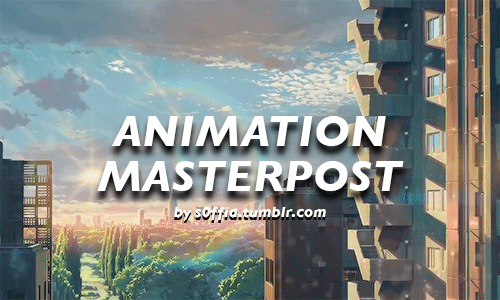
websites:
Animation World Network
Animation Backgrounds
Animation Magazine
Animation & CGI
Animator Island
Anime News Network
Cartoon Brew
Character Design References
On Animation
Reference! Reference! (free database for animation)
11 Second Club (monthly character animation competition)
tumblr blogs:
animationart
animationforce
animationtidbits
aspiretoanimate
calartscharacteranimation
disney-moments-sketches (Allen Ostergar’s blog, animator at Walt Disney)
drawingforsuckas
fuckyeahconceptart
storyboardresources
theanimationarchive
theartofanimation
wannabeanimator
resources/tips:
Animation schools: 1 / 2 (Top 50 USA) / 3 (Top 100 international)
Which animation school is right for you? (Ringling vs. CalArts)
Don’t want to/ can’t afford art school? you’ve got other options.
Animation Mentor: The online animation school
Art school exercises!!
51 Great Animation exercises
20 things you can expect as a traditional (2D) animation student that they never tell you
A Survivor’s Guide to Life Inside an Animation Studio
Animation basics: The art of timing and spacing
Animation Notes From Ollie Johnston
Animated chart of the basic principles of animation
10 Second tip: Always Anticipate
book: Animation: Learn How to Draw Animated Cartoons by Preston Blair
book: A System for Planning and Timing Animation by Glen Keane
book: Timing for animation by Harold Whitaker and John Halas
book: Gesture Drawing for animation by Walt Stanchfield
Basic 3D Animation Terminology
Digital pencil test!!
Keys to Emotion in Animation
Lessons from Disney’s Zootopia
Model Sheets central
The importance of Acting in Animation by Segio Pablos
Printable exposure/dope sheet
Phoneme Chart
Recommended reading for animation students and enthusiasts
The 5 Types of Animation
The Know-How of Cartooning
The Unofficial Truth about The Animation Industry
Why Disney Sends Its Animators To Life Drawing Classes
Walk/Run Cycles reference
What is Pixar looking for in Animators? (scroll down)
Portfolio Advice for The Disney Animation Internship
What is Rigging?
3D Rigging Terminology
3D Modeling Terminology
tutorials:
Animation for Beginners: Where do I start
Animation Physics (Video tutorials on physics for animation artists)
Animation tutorial part. 1 AKA “the secret of animation”
Appealing Poses in Animation
Background & Movement in TV
Blinking tips
Breakdown tutorial (middle frame between to keys)
Drawing & Composition for visual storytelling
Drawing for Animation
Drawing a Likeness
Animation fundamentals + tutorials
Filmmaking: Composition and Framing
Getting Shape Change
How to animate using photoshop
How to animate Characters in Perspective
How to Animate Head Turns
How to Draw Gesture
OpeenToonz tutorials masterpost
Overlapping Action and Drag
Portfolio tips / Making A Successful Portfolio
Lyp Sync tutorial
Line of action
Basics of good cartooning 1-12 by Sherm Cohen
Squash & Stretch tutorial
Squash and Stretch 2
Storyboarding tutorials by Sherm Cohen
The Illusion of Life: 12 Principles of Animation
Tilt, Flow & Rhythm
Underlying Structure When Animating Expressions
TVPaint tutorial: Uploading and Coloring Scanned Animation
supplies (traditional animation):
10 Essential Art Supplies for the Traditional Animator
How to Use a Light Table for Animation
Making a Simple Animation Lightbox
Peg bars, Animation Disk & Desk
softwares:
free
Blender (3D creation suite. It supports the entirety of the 3D pipeline: modeling, rigging, animation,etc)
Emofuri (animate using .psd files)
Google Sketchup (
Live2D ( animation/drawing software
OpenToonz (Studio Ghibli’s open source animation software)
Pencil2D (create traditional hand-drawn animation (cartoon) using both bitmap and vector graphics)
Renderman (Pixar’s free 3D rendering software)
Sculptris (Free digital sculpting tool by the makers of Zbrush
SculptGL (Online modelling program)
Synfig (2d animation using a vector and bitmap artwork)
paid
Zbrush (digital sculpting sw by Pixologic)
Mudbox (digital sculpting sw by Autodesk)
Cinema 4D (digital sculpting sw by Maxon)
TVPaint (2d animation)
animation studios:
Aardman (Bristol, UK)
Blue Sky Studios (Greenwich, USA)
Dreamworks (Glendale, USA)
Fox Animation (USA)
Imagination Studios/CN (Burbank, USA)
Industrial Light & Magic (San Francisco, USA)
Laika (Hillsboro, USA)
Luma Pictures (USA / Melbourne, Australia)
Nickelodeon Animation (Burbank, USA)
Pixar (Emeryville, CA)
Rise FX (Berlin, Germany)
Studio Ghibli (Tokyo, Japan)
Sony Picture Imageworks (Vancouver, Canada)
Sony Pictures Animation (Culver City, CA)
Walt Disney Animation (Burbank, CA)
Weta Digital (Wellington, New Zealand)
inspiration: worth watching short films
Coda by and maps and plans
Contre Temps by the Contre Temps Team
Duet by Glen Keane
DOG ENVY by Olivia Huynh
Fallin Floyd by il Luster
French Roast
Gravity by Ailin Liu
In Between by Gobelins
Jinxy Jenkins and Lucky Lou by Michael Bidinger and Michelle Kwon
My Big Brother by Jason Rayner
Night Light by Qing Han
Nephtali by Glen Keane
Nocturne by Kari Casady
Historia de un Oso by Gabriel Osorio
Home Sweet Home by home sweet home the film
One Bright Dot by Clément Morin
Stickboy by Giant Ant
SOAR by Alyce Tzue
Tsunami by The Animation Workshop
Thought of You by Ryan Woodward
Vagabond by The Animation Workshop
5 Gobelins Shorts That Pay Tribute To Women Animation Pioneers
site that you can type in the definition of a word and get the word
site for when you can only remember part of a word/its definition
site that gives you words that rhyme with a word
site that gives you synonyms and antonyms
I heard that wattpad is doing a purge of NSFW works, so I'm going to be posting some general orientation type videos and some how to's to help folks learn more about Ao3.
If you want to follow (or avoid) those posts, I'm tagging them as welcome wattpad
Yoooooo!!!!


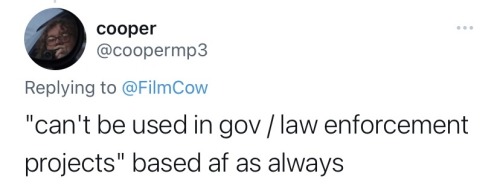
𝑪𝑼𝑺𝑻𝑶𝑴 𝑹𝑶𝑳𝑬𝑷𝑳𝑨𝒀 𝑻𝑨𝑮𝑺 + 𝑺𝒀𝑴𝑩𝑶𝑳𝑺 ─ as someone who's always found it extra unnecessary but fun to have custom, cute tags for my blogs, here are a few custom ideas for you! you do not have to credit me, but please don't steal or repost (: a like or a reblog goes a long way!

𓍢 ・ your tag here.
⌗ tag. ﹙ lorem ipsum ﹚
꒰ lorem ipsum ꒱ ⌗ tag
𖥸 ─ your tag here.
୧ ও your tag here ଓ ৴
✦ ・ your tag here
⩇⩇:⩇⩇ lorem ipsum ᐢ. .ᐢ tag here
ׅ ࣪𓏲ּ ֶָ lorem ipsum ꞝ tag here
⌗ tag ⁝ lorem ipsum ( ☁︎ )
𐫱 › your tag here.
˖ ࣪ . ࿐ ♡ ˚ . lorem ipsum ⌗ tag
. . ˚ . ⌗ tag
↷ lorem ipsum ꒰ tag ꒱

𝐂𝐔𝐒𝐓𝐎𝐌 𝐒𝐘𝐌𝐁𝐎𝐋𝐒
﹕ ⌗ 𐫱⠀ ୨⠀ ⋆⠀ ﹫ 𓂅⠀. . ˚ . ↷ ・ ୧ 𖥸 ও ♡ 𖣠 ✿ ❛ ଓ ❜ ❟ ꒰ ꒱ ✧ Ꮺ ₍ ᐢ..ᐢ ₎ ✢ ∫ ∬ — ➷ ﹖ !﹟ ◞ ◟ ◝ ◜ ┆ ५ ꒳ ✹ ᆞ ★ ﹏ ꧕ ╱ ܓ 〣 ꜜ 、˖ ָ࣪ ❅ 𖧧 ఇ - ̗̀ ̖́- ♥︎ ❥ ❤︎ 𖥻 ෆ ꩜ ⸙ ˖ ࣪ ˖ ╳ ❝ ❞ ⊹ ꛁ ꢂ

My friend needs your feedback!!! He runs a website [Lingopie] where you can learn a language by watching TV shows and movies.
As a polyglot, he is super passionate about learning and teaching languages and wants to help students and language learners succeed. He has been working on this project 24/7, so your feedback would make his day! Here is the problem:
His website is still young, so they have limited funds to obtain licenses for movies and television shows. To help as many people as possible, he is wondering what languages you would like to learn or have exams for, so he can focus on expanding the media collection for these languages. I really like him and want his project to succeed, so I created a form where you can vote.
The following languages are available at the moment: Japanese 🇯🇵, Korean 🇰🇷, Spanish 🇪🇸, French 🇫🇷, German 🇩🇪, Italian 🇮🇹, Portuguese 🇵🇹 and English 🇺🇸
Which language are you most interested in? Please vote here!
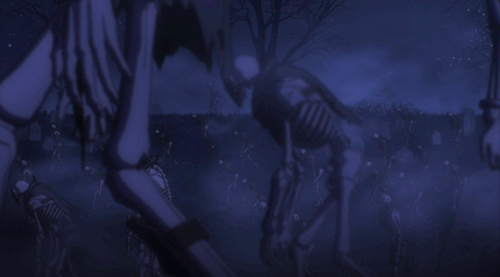
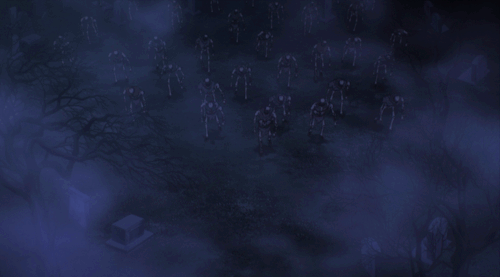
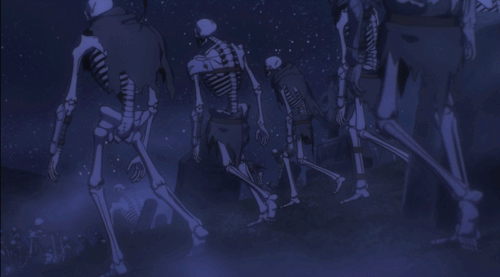
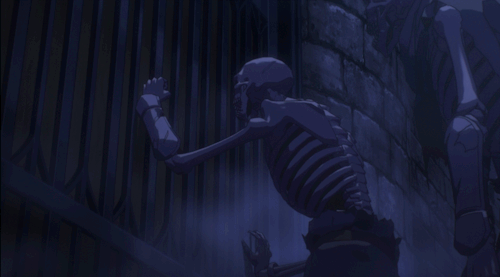
*September 1st on Tumblr*
Aspergers/autism is seeing a needle, and then a minute later possibly noticing the haystack.
-
 coldsunlight36 reblogged this · 1 week ago
coldsunlight36 reblogged this · 1 week ago -
 coldsunlight36 liked this · 1 week ago
coldsunlight36 liked this · 1 week ago -
 meltymarshmellow liked this · 1 week ago
meltymarshmellow liked this · 1 week ago -
 janussand7 reblogged this · 1 week ago
janussand7 reblogged this · 1 week ago -
 janussand7 liked this · 1 week ago
janussand7 liked this · 1 week ago -
 valy-gc reblogged this · 1 week ago
valy-gc reblogged this · 1 week ago -
 saltysniper reblogged this · 1 week ago
saltysniper reblogged this · 1 week ago -
 phoenix-jasper reblogged this · 1 week ago
phoenix-jasper reblogged this · 1 week ago -
 phoenix-jasper liked this · 1 week ago
phoenix-jasper liked this · 1 week ago -
 flydung reblogged this · 1 week ago
flydung reblogged this · 1 week ago -
 minecrafthorsereal liked this · 1 week ago
minecrafthorsereal liked this · 1 week ago -
 hiromushinbo reblogged this · 1 week ago
hiromushinbo reblogged this · 1 week ago -
 sapphic-storm69 liked this · 1 week ago
sapphic-storm69 liked this · 1 week ago -
 nothing-but-flowers reblogged this · 1 week ago
nothing-but-flowers reblogged this · 1 week ago -
 emilyelizabethfowl reblogged this · 1 week ago
emilyelizabethfowl reblogged this · 1 week ago -
 dusk-in-neon reblogged this · 1 week ago
dusk-in-neon reblogged this · 1 week ago -
 mahikamihan reblogged this · 1 week ago
mahikamihan reblogged this · 1 week ago -
 corvidias liked this · 1 week ago
corvidias liked this · 1 week ago -
 ravensncrowsx reblogged this · 1 week ago
ravensncrowsx reblogged this · 1 week ago -
 residentdisaster liked this · 1 week ago
residentdisaster liked this · 1 week ago -
 teamstormbow liked this · 1 week ago
teamstormbow liked this · 1 week ago -
 we-are-undone-95 liked this · 1 week ago
we-are-undone-95 liked this · 1 week ago -
 super-big-naturals liked this · 1 week ago
super-big-naturals liked this · 1 week ago -
 miss-este-eye reblogged this · 1 week ago
miss-este-eye reblogged this · 1 week ago -
 qafi liked this · 1 week ago
qafi liked this · 1 week ago -
 asaltyarchon reblogged this · 1 week ago
asaltyarchon reblogged this · 1 week ago -
 asaltyarchon liked this · 1 week ago
asaltyarchon liked this · 1 week ago -
 swagging-back-to reblogged this · 1 week ago
swagging-back-to reblogged this · 1 week ago -
 annwayne reblogged this · 1 week ago
annwayne reblogged this · 1 week ago -
 itsevanffsbutspam reblogged this · 1 week ago
itsevanffsbutspam reblogged this · 1 week ago -
 yeehawevan liked this · 1 week ago
yeehawevan liked this · 1 week ago -
 silcoded liked this · 1 week ago
silcoded liked this · 1 week ago -
 hailthenightmareking reblogged this · 1 week ago
hailthenightmareking reblogged this · 1 week ago -
 positive-quo-vibes reblogged this · 1 week ago
positive-quo-vibes reblogged this · 1 week ago -
 aylamao117 reblogged this · 1 week ago
aylamao117 reblogged this · 1 week ago -
 bluesargentswife reblogged this · 1 week ago
bluesargentswife reblogged this · 1 week ago -
 bluesargentswife liked this · 1 week ago
bluesargentswife liked this · 1 week ago -
 onecoolbeetle reblogged this · 1 week ago
onecoolbeetle reblogged this · 1 week ago -
 onecoolbeetle liked this · 1 week ago
onecoolbeetle liked this · 1 week ago -
 14pinkpaperclips liked this · 1 week ago
14pinkpaperclips liked this · 1 week ago -
 awfulpersonuwu reblogged this · 1 week ago
awfulpersonuwu reblogged this · 1 week ago -
 awfulpersonuwu liked this · 1 week ago
awfulpersonuwu liked this · 1 week ago -
 leticiapml liked this · 1 week ago
leticiapml liked this · 1 week ago -
 barnesandspirk reblogged this · 1 week ago
barnesandspirk reblogged this · 1 week ago -
 barnesandspirk liked this · 1 week ago
barnesandspirk liked this · 1 week ago -
 yeeeeeeeeeeeeeeeeeeeeeee reblogged this · 1 week ago
yeeeeeeeeeeeeeeeeeeeeeee reblogged this · 1 week ago -
 yeeeeeeeeeeeeeeeeeeeeeee liked this · 1 week ago
yeeeeeeeeeeeeeeeeeeeeeee liked this · 1 week ago -
 calyyypsooo reblogged this · 1 week ago
calyyypsooo reblogged this · 1 week ago -
 calyyypsooo liked this · 1 week ago
calyyypsooo liked this · 1 week ago
